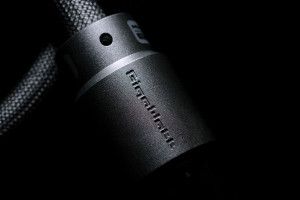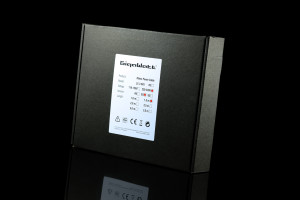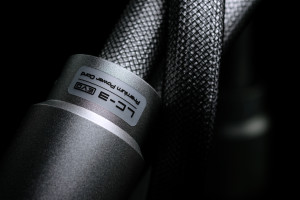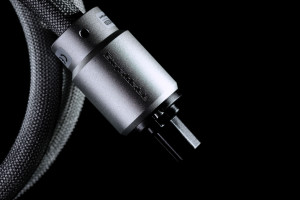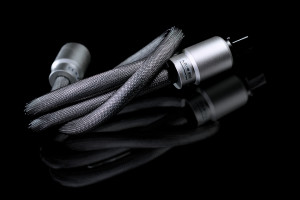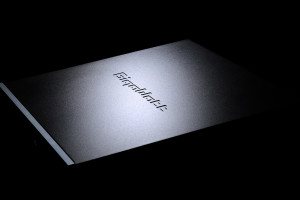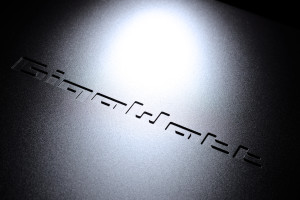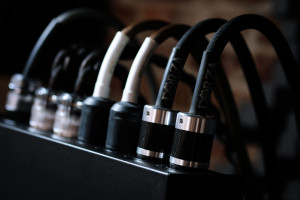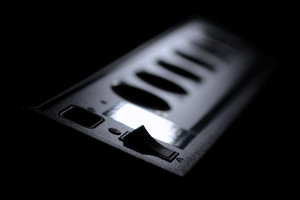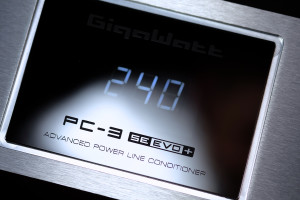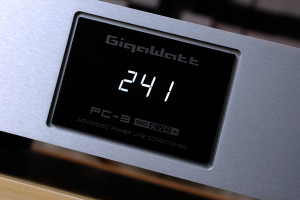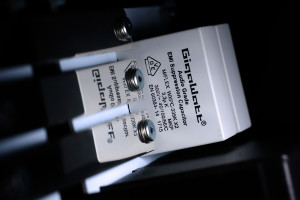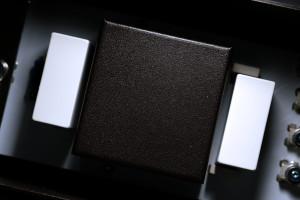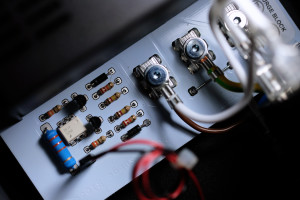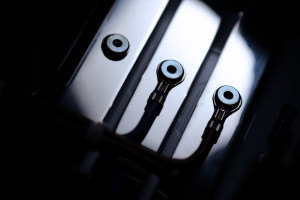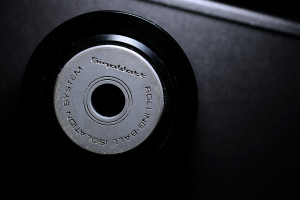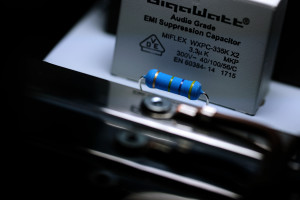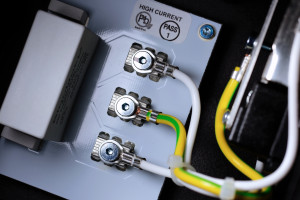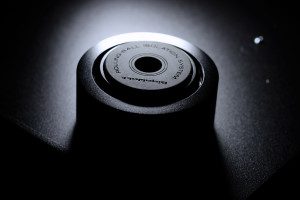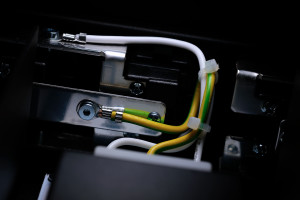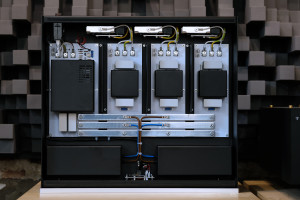Instead of releasing new hardware at the usual industry pace, Adam Szubert and his team years ago took the calm and steady progression route of upgrades. His first PC-3 machine was released a decade ago and this review’s item – GigaWatt PC-3 SE EVO+ – is its fourth and final version. Enjoy.
Introduction
I have no clue how many reporters return to their old writings, but once in a while I do get back to mine. This quite habitual activity is useful from my perspective. I see a mild improvement past comparing my articles published say three years ago to content released just recently, whereas today’s words judged another three springs from now on I’ll most likely view as something decent at best and so on so forth. However, during one of those long thorough looks in the past I discovered something interesting and related to this review’s company. For years I’ve been very much into headphones, though my transition to regular stereo hardware happened quite rapidly. I remember well my first serious setup of the sort (KEF LS50, Hegel H70, QED cables and then some) and just recently I acknowledged that the GigaWatt PF-2 power strip listed in my current reference rig has been on duty ever since. This reliable trooper is the only one left from my shy stereo beginnings, everything else is long gone.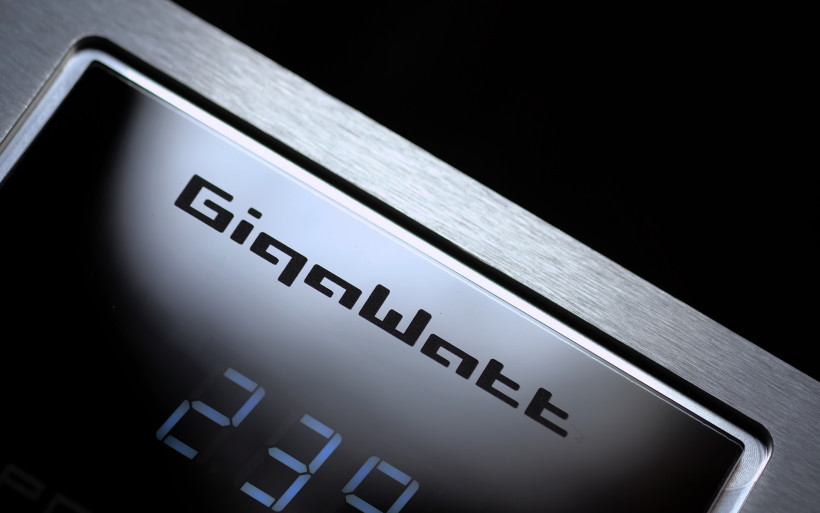 The sentimental story above also paints Adam Szubert as one of the very first individuals who decided to give a newcomer – that would be me back then – a chance. Now as for the PF-2, an itch to replace it wasn’t strong for years. Truth told, up to a point power related products didn’t interest me much and reliability plus usefulness of this particular item by GigaWatt factored in as well. Why to fix something that ain’t broken? Or was I simply too lazy to investigate further? Maybe both? I can’t tell. In any case, quality of my daily tools increased in time and accordingly so did importance of juice for them. It was a lengthy process to fully understand this. Early on the not very sexy power matter was simply something I knew I needed to address, however today it’s nothing short but crucial for me and far more interesting than it ever was.
The sentimental story above also paints Adam Szubert as one of the very first individuals who decided to give a newcomer – that would be me back then – a chance. Now as for the PF-2, an itch to replace it wasn’t strong for years. Truth told, up to a point power related products didn’t interest me much and reliability plus usefulness of this particular item by GigaWatt factored in as well. Why to fix something that ain’t broken? Or was I simply too lazy to investigate further? Maybe both? I can’t tell. In any case, quality of my daily tools increased in time and accordingly so did importance of juice for them. It was a lengthy process to fully understand this. Early on the not very sexy power matter was simply something I knew I needed to address, however today it’s nothing short but crucial for me and far more interesting than it ever was.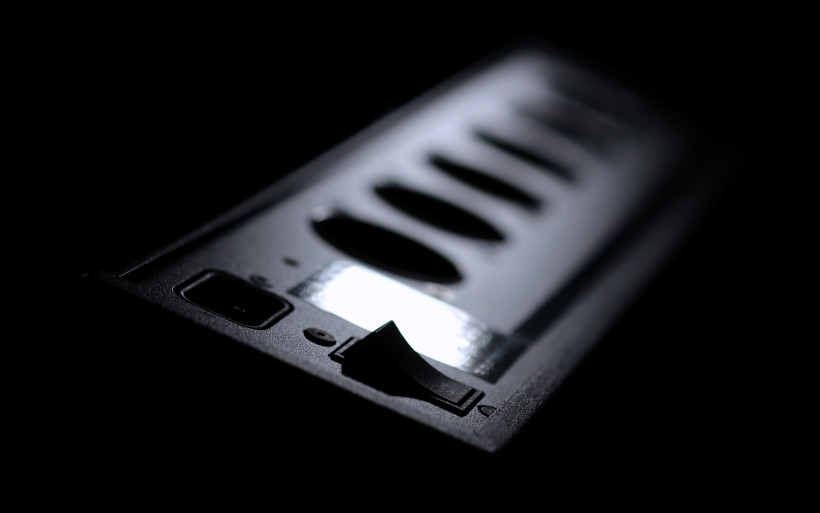 I collected enough evidence over the years to now fully responsibly say that power and room acoustics are of top priority on the to-do list, otherwise an individual such as myself misses way too much to conduct his work reliably. Quality components benefit from cleaned up power feed far more times than they don’t and here GigaWatt’s items swiftly step in. This local audio house established by Adam Schubert in 2007 has been all about such a cleaning service since the very beginning. The man himself is considered as a top class expert on the subject, whereas numerous rooms with his hardware inside during this May’s Munich event proved the point rather well. Again.
I collected enough evidence over the years to now fully responsibly say that power and room acoustics are of top priority on the to-do list, otherwise an individual such as myself misses way too much to conduct his work reliably. Quality components benefit from cleaned up power feed far more times than they don’t and here GigaWatt’s items swiftly step in. This local audio house established by Adam Schubert in 2007 has been all about such a cleaning service since the very beginning. The man himself is considered as a top class expert on the subject, whereas numerous rooms with his hardware inside during this May’s Munich event proved the point rather well. Again.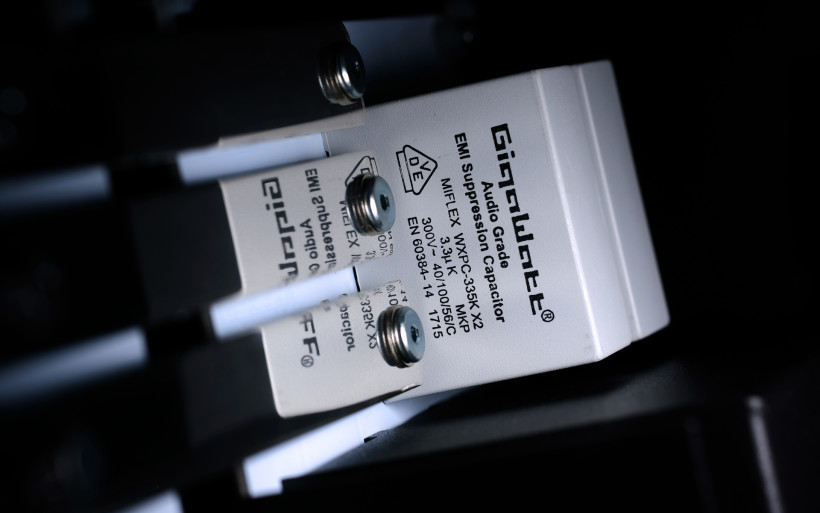 As Adam put it, the very first idea of upgrading his basic passive PC-3 power conditioner to the SE version was born more than a decade ago. This item was second only to the man’s top of the line PC-4 box loaded with 12 outlets. However, the price gap between the two was significant and no room to maneuver as far as labeling went didn’t make things any easier. Due to obvious positioning related reasons, Adam couldn’t go neither with a digit beyond his flagship nor below today’s hero. He had to act in the gray area in-between and did so via implementing tricks from the former into the latter. The process of downscaling and upping Mr Szubert’s own game was stretched in years. The ‘EVO+’ indicates the third incarnation of his PC-3 machine released waaay back, whereas the ‘Special Edition’ aka ‘SE’ bit finally closes this interesting item’s chapter. Let’s see what Mr GigaWatt came up with.
As Adam put it, the very first idea of upgrading his basic passive PC-3 power conditioner to the SE version was born more than a decade ago. This item was second only to the man’s top of the line PC-4 box loaded with 12 outlets. However, the price gap between the two was significant and no room to maneuver as far as labeling went didn’t make things any easier. Due to obvious positioning related reasons, Adam couldn’t go neither with a digit beyond his flagship nor below today’s hero. He had to act in the gray area in-between and did so via implementing tricks from the former into the latter. The process of downscaling and upping Mr Szubert’s own game was stretched in years. The ‘EVO+’ indicates the third incarnation of his PC-3 machine released waaay back, whereas the ‘Special Edition’ aka ‘SE’ bit finally closes this interesting item’s chapter. Let’s see what Mr GigaWatt came up with.
Build
The product arrived inside of a double cardboard. Dressed in protective fabric and put in-between two foam forms, it was perfectly secure. Two small boxes found underneath held a brief manual, a pair of protective gloves and GigaWatt’s LC-3 EVO power cord. Both its ends were covered via plastic caps, whereas velcro-straps surely helped in having it nicely coiled. Packaging of today’s product is the industry standard and as such is nothing to gush over. However, as it was the case with the PC-2 EVO+ power line conditioner reviewed here, its pricier sibling also shows the GigaWatt team’s attention to small things; each additional item in its own translucent bag, branded duct tape, everything uniform etc. They’re no amateurs and it shows.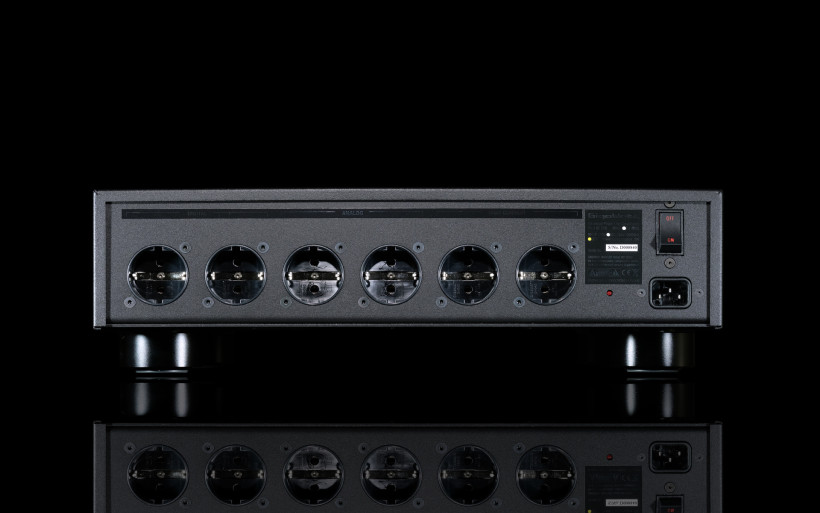 Just as GigaWatt PC-2 EVO+, its costlier kin does the same job; it provides protection against interference and voltage spikes present in home power grid and filters current prior to its delivery to connected hardware. Put shortly, today’s GigaWatt is here to guard and clean and as such is undeniably useful. The ‘SE’ part in its name indicates several changes found both inside and out in comparison to the standard PC-3 EVO+ model. The newcomer’s copper distribution rails of 30mm2 cross-section are silver-coated (99,995%), whereas its on/off breaker is of hydraulic-magnetic type and made exclusively for Adam’s operation by Carling Technologies. The product’s chassis is also damped via bituminous-polymer composite and quality LC-2 EVO power cord included in the package is the standard option. However, GigaWatt PC-3 SE EVO+ sent to me sported even costlier LC-3 EVO model and a set of four non-standard rolling-ball anti-vibration decoupling feet. Adam’s second best also has a DC blocker circuit inside as a standard feature. The total ask for all listed luxury is €6’855.
Just as GigaWatt PC-2 EVO+, its costlier kin does the same job; it provides protection against interference and voltage spikes present in home power grid and filters current prior to its delivery to connected hardware. Put shortly, today’s GigaWatt is here to guard and clean and as such is undeniably useful. The ‘SE’ part in its name indicates several changes found both inside and out in comparison to the standard PC-3 EVO+ model. The newcomer’s copper distribution rails of 30mm2 cross-section are silver-coated (99,995%), whereas its on/off breaker is of hydraulic-magnetic type and made exclusively for Adam’s operation by Carling Technologies. The product’s chassis is also damped via bituminous-polymer composite and quality LC-2 EVO power cord included in the package is the standard option. However, GigaWatt PC-3 SE EVO+ sent to me sported even costlier LC-3 EVO model and a set of four non-standard rolling-ball anti-vibration decoupling feet. Adam’s second best also has a DC blocker circuit inside as a standard feature. The total ask for all listed luxury is €6’855. GigaWatt PC-3 SE EVO+ measures (WxDxH) 440x400x115mm, weighs healthy 16 kilograms and all in all is substantial enough to be viewed as a regular component. This item’s power consumption and total output power are 9 and 3 680W respectively, whereas max current load is 16A. Today’s star can absorb impulse current as high as 20 000A and in order to fully benefit from its protection service, a connection to an earthed socket is a must.
GigaWatt PC-3 SE EVO+ measures (WxDxH) 440x400x115mm, weighs healthy 16 kilograms and all in all is substantial enough to be viewed as a regular component. This item’s power consumption and total output power are 9 and 3 680W respectively, whereas max current load is 16A. Today’s star can absorb impulse current as high as 20 000A and in order to fully benefit from its protection service, a connection to an earthed socket is a must.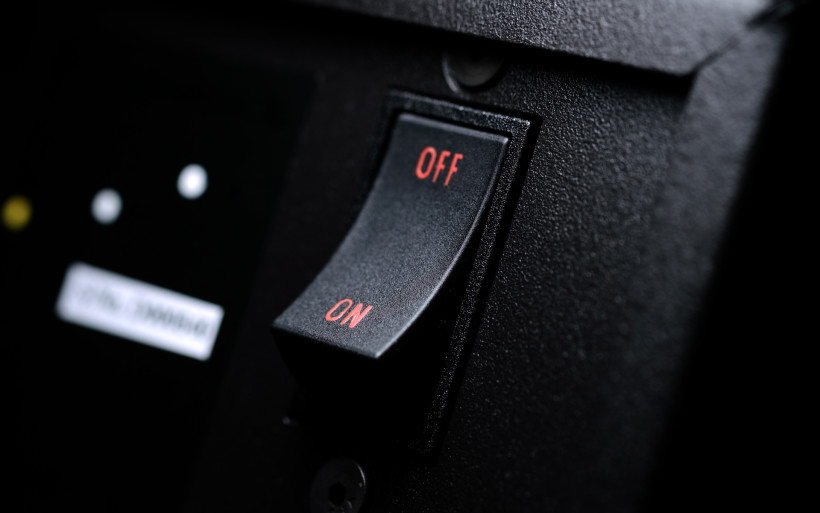 Today’s visually is a regular GigaWatt affair, hence hardware built to last, of utmost practical sort and flamboyance level pretty much non-existent. Think Pass Labs hardware but of power related type. A thick brushed aircraft grade aluminium slab is the product’s front fixed to its enclosure via four visible hex screws strategically placed in corners. My loaner arrived silver, however a black version is also available. Nicely looking plexiglass window with manufacturer’s logo up high, model’s name down below and an input voltage LED display in-between is to be found in the middle. This feature measures said parameter in real time and its values in my room were within the 238-245V range. Red colour scheme is the standard here, however the unit sent to yours truly had white digits, but green and blue options are also available upon request. The on-site description also informs us that installed voltmeter is resilient to distortion and error introduced via high order harmonics, but all by itself it doesn’t distort or impact performance in any way. Once engaged, the handy switch on the product’s underbelly shuts voltage display and a small discrete red light takes over.
Today’s visually is a regular GigaWatt affair, hence hardware built to last, of utmost practical sort and flamboyance level pretty much non-existent. Think Pass Labs hardware but of power related type. A thick brushed aircraft grade aluminium slab is the product’s front fixed to its enclosure via four visible hex screws strategically placed in corners. My loaner arrived silver, however a black version is also available. Nicely looking plexiglass window with manufacturer’s logo up high, model’s name down below and an input voltage LED display in-between is to be found in the middle. This feature measures said parameter in real time and its values in my room were within the 238-245V range. Red colour scheme is the standard here, however the unit sent to yours truly had white digits, but green and blue options are also available upon request. The on-site description also informs us that installed voltmeter is resilient to distortion and error introduced via high order harmonics, but all by itself it doesn’t distort or impact performance in any way. Once engaged, the handy switch on the product’s underbelly shuts voltage display and a small discrete red light takes over.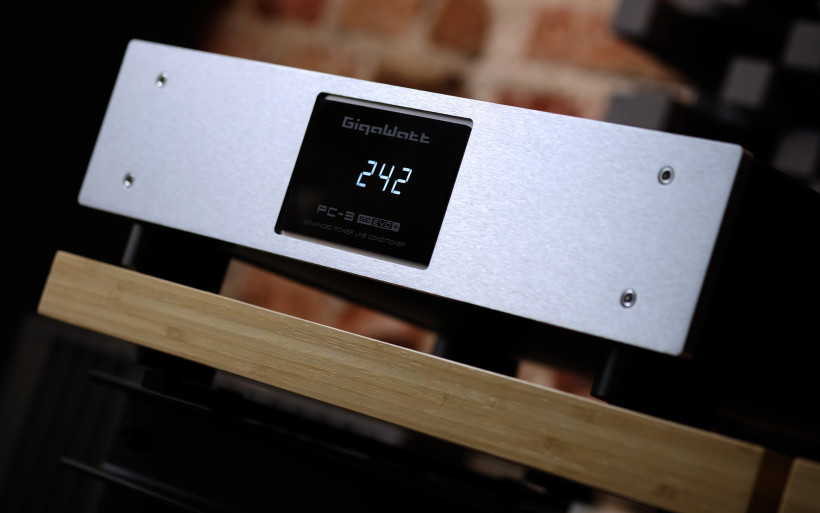 The product’s rear looks almost identical to the PC-2 EVO+ model. It features six GigaWatt’s own G-040 Schuko inlets grouped in three categories. Their contacts are silver-plated, cryo-treated and demagnetized. Each pair from left to right is meant to handle digital, analog and high current hardware respectively. A nameplate next in line informs us about serial number, voltage, input inlet type, power draw, DB blocker on/off board and proud manufacturing in Poland. If engaged, the red LED located below this label indicates polarity and/or grounding issues, which I’ve found useful and convenient many times, whereas the IEC socket right next to this feature along with neighbouring main on/off switch close the list. One U-shaped steel sheet forms the item’s cover finished in matte black and with nicely engraved manufacturer’s logo on top. GigaWatt’s own decoupling pucks labeled as ‘Rolling-Ball Isolation System Anti-Vibration Feet’ are big, look reliably and undoubtedly are of quality. I have no idea who makes these for Adam, but one of well-known audio houses into such goods is my bet, highly likely local.
The product’s rear looks almost identical to the PC-2 EVO+ model. It features six GigaWatt’s own G-040 Schuko inlets grouped in three categories. Their contacts are silver-plated, cryo-treated and demagnetized. Each pair from left to right is meant to handle digital, analog and high current hardware respectively. A nameplate next in line informs us about serial number, voltage, input inlet type, power draw, DB blocker on/off board and proud manufacturing in Poland. If engaged, the red LED located below this label indicates polarity and/or grounding issues, which I’ve found useful and convenient many times, whereas the IEC socket right next to this feature along with neighbouring main on/off switch close the list. One U-shaped steel sheet forms the item’s cover finished in matte black and with nicely engraved manufacturer’s logo on top. GigaWatt’s own decoupling pucks labeled as ‘Rolling-Ball Isolation System Anti-Vibration Feet’ are big, look reliably and undoubtedly are of quality. I have no idea who makes these for Adam, but one of well-known audio houses into such goods is my bet, highly likely local.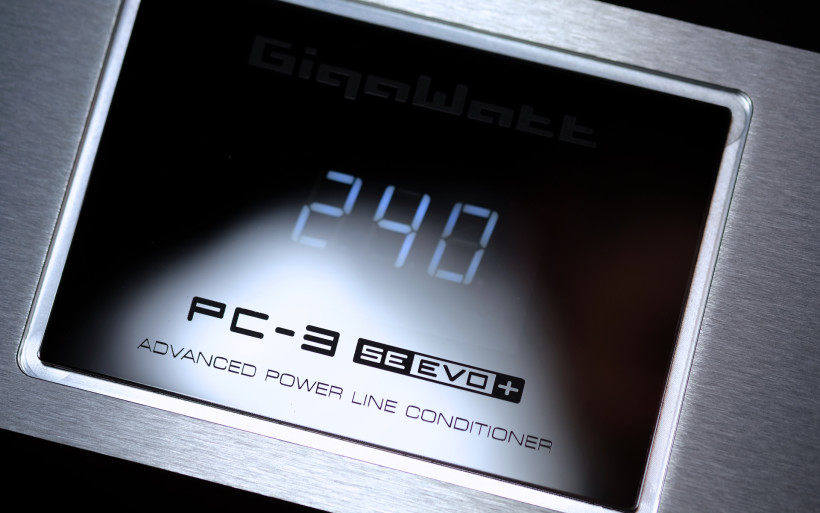 GigaWatt PC-3 SE EVO+ might not look like a luxurious item, it’s way too utilitarian and modest to be labeled as such right from the get-go. It was made to do a very specific job, which it does truly well. However, closer inspection indicates clearly that this heavy box, just as any other similar item by GigaWatt, is finely put together and a lot of thought went into it. The devil’s in the details; all parts nicely matched, hex screws perfectly centric, components made for GigaWatt exclusively, practical set of features, utmost orderly innards etc. On visual and assembly counts today’s hero scores high in my book, not a single reason I’ve found to nitpick.
GigaWatt PC-3 SE EVO+ might not look like a luxurious item, it’s way too utilitarian and modest to be labeled as such right from the get-go. It was made to do a very specific job, which it does truly well. However, closer inspection indicates clearly that this heavy box, just as any other similar item by GigaWatt, is finely put together and a lot of thought went into it. The devil’s in the details; all parts nicely matched, hex screws perfectly centric, components made for GigaWatt exclusively, practical set of features, utmost orderly innards etc. On visual and assembly counts today’s hero scores high in my book, not a single reason I’ve found to nitpick.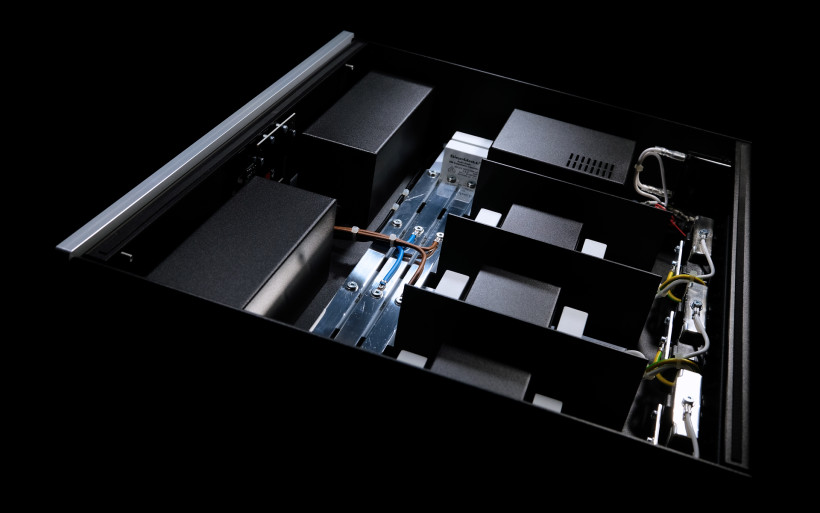 At first glance, Adam’s second best deck on the inside looks very much alike the PC-2 EVO+; not only it’s as impressively made, but the general idea hasn’t changed. It’s all about even power distribution, noise suppression and protection, yet measures to reach these goals are different. Instead of regular on/off buttons loaded with traditional fuses or their thermal variants, GigaWatt PC-3 SE EVO+’s hydraulic-magnetic breaker monitors current value and stops overload spikes without these small buggers. The starter block next in line sports phase control, DC blocker circuit, pre-filter and charging module for compensation batteries. It’s based on plasma sparks, UltraMOV varistors and provides overcurrent and surge guard. The next stop are three massive rails made of silver-plated C11000 cathode copper, followed by a double buffering circuit loaded with GigaWatt’s proprietary compensation batteries made by Miflex. From there current goes to three separate sections powered in parallel. All are subject to interference suppressing RLC blocks, which incorporate quality polyester capacitors and filters based on Super-MSS (Sendust) cores. Generous bars right next to inlets and not a drop of solder anywhere in sight also don’t go unnoticed. The product’s internal wiring is teflon-insulated OFC copper and all key areas are connected mechanically via screws and clamps.
At first glance, Adam’s second best deck on the inside looks very much alike the PC-2 EVO+; not only it’s as impressively made, but the general idea hasn’t changed. It’s all about even power distribution, noise suppression and protection, yet measures to reach these goals are different. Instead of regular on/off buttons loaded with traditional fuses or their thermal variants, GigaWatt PC-3 SE EVO+’s hydraulic-magnetic breaker monitors current value and stops overload spikes without these small buggers. The starter block next in line sports phase control, DC blocker circuit, pre-filter and charging module for compensation batteries. It’s based on plasma sparks, UltraMOV varistors and provides overcurrent and surge guard. The next stop are three massive rails made of silver-plated C11000 cathode copper, followed by a double buffering circuit loaded with GigaWatt’s proprietary compensation batteries made by Miflex. From there current goes to three separate sections powered in parallel. All are subject to interference suppressing RLC blocks, which incorporate quality polyester capacitors and filters based on Super-MSS (Sendust) cores. Generous bars right next to inlets and not a drop of solder anywhere in sight also don’t go unnoticed. The product’s internal wiring is teflon-insulated OFC copper and all key areas are connected mechanically via screws and clamps.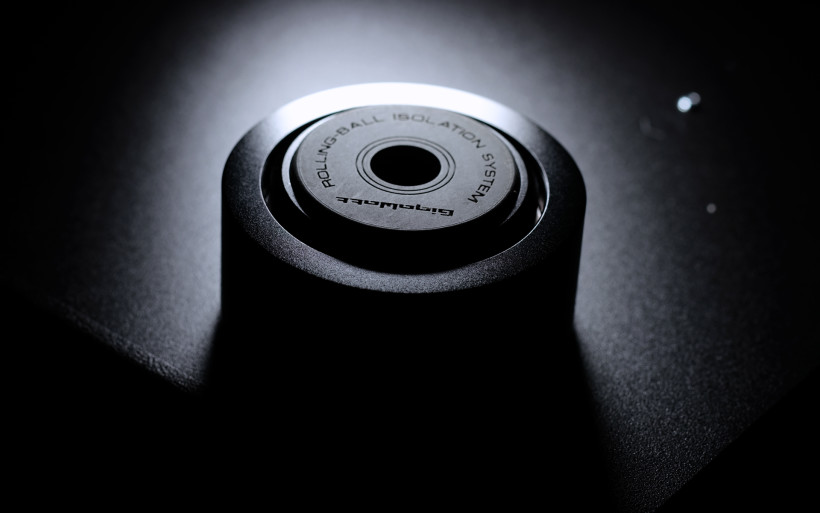 And lastly, GigaWatt LC-3 EVO power cable included in today’s package recently replaced the LC-3 MK3+ leash. However, instead of being the next upgraded version as per usual, the former was made from scratch and to a degree based on GigaWatt’s tip tier LS series. The LC-3 EVO sports eight 1.5mm2 thick multi-stranded veins in total, each consists of seven tightly twisted copper conductors. This alignment decreases the product’s own inductance and leaves its fairly big capacitance intact. Used plugs are massive, their enclosures are aluminium and cryo-treated demagnetized contacts are made of rhodium-plated brass. Inner connections aren’t soldered but tightly locked via screws. The LC-3 EVO looks nice, feels pleasantly substantial and – since it’s not a solid core type – is flexible even in spite of generous thickness.
And lastly, GigaWatt LC-3 EVO power cable included in today’s package recently replaced the LC-3 MK3+ leash. However, instead of being the next upgraded version as per usual, the former was made from scratch and to a degree based on GigaWatt’s tip tier LS series. The LC-3 EVO sports eight 1.5mm2 thick multi-stranded veins in total, each consists of seven tightly twisted copper conductors. This alignment decreases the product’s own inductance and leaves its fairly big capacitance intact. Used plugs are massive, their enclosures are aluminium and cryo-treated demagnetized contacts are made of rhodium-plated brass. Inner connections aren’t soldered but tightly locked via screws. The LC-3 EVO looks nice, feels pleasantly substantial and – since it’s not a solid core type – is flexible even in spite of generous thickness.
Sound
GigaWatt PC-3 SE EVO+ has been on duty in my reference setup since late November 2018. I took my time with this particular item and the list of hardware it fed since then is generous; Trilogy 995R and 915R, Kinki Studio EX-P7 and EX-M7, Accuphase P-4500 and C-2150, EggShell TanQ, Ayon Scorpio, Thöress Dual Function Preamplifier, Pass Labs XP-12, Trilogy 925 and Bakoon AMP-13R are the most important. My LampizatOr Pacific and fidata HFAS-S10U also were on the job with today’s item. But most importantly, I’ve been comparing the PC-3 SE EVO+ and PF-2 silently in case of all mentioned products and now the time has come to finally close its chapter.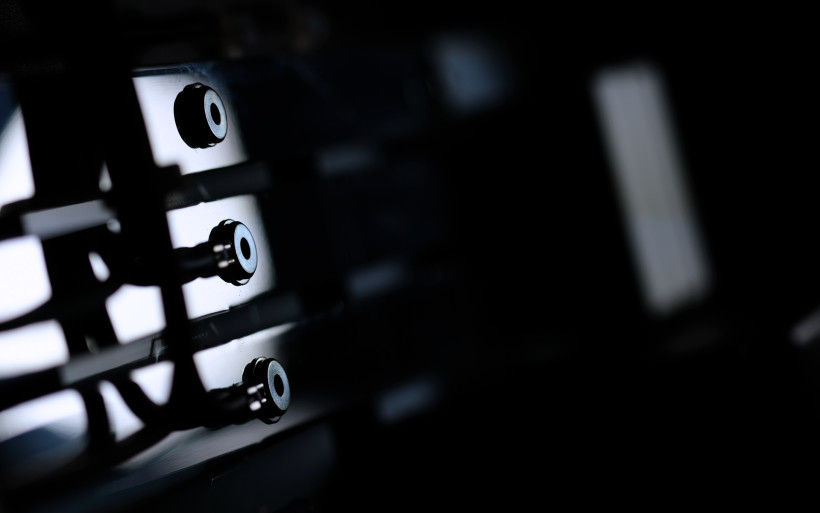 GigaWatt PC-3 SE EVO+ has been on duty in my reference setup since late November 2018. I took my time with this particular item and the list of hardware it powered since then is generous; Trilogy 995R and 915R, Kinki Studio EX-P7 and EX-M7, Accuphase P-4500 and C-2150, EggShell TanQ, Ayon Scorpio, Thöress Dual Function Preamplifier, Trilogy 925 and Bakoon AMP-13R are the most important. My LampizatOr Pacific and fidata HFAS-S10U also were on the job with today’s item. But most importantly, I’ve been comparing the PC-3 SE EVO+ and PF-2 silently in case of all mentioned products and now the time has come to finally close its chapter.
GigaWatt PC-3 SE EVO+ has been on duty in my reference setup since late November 2018. I took my time with this particular item and the list of hardware it powered since then is generous; Trilogy 995R and 915R, Kinki Studio EX-P7 and EX-M7, Accuphase P-4500 and C-2150, EggShell TanQ, Ayon Scorpio, Thöress Dual Function Preamplifier, Trilogy 925 and Bakoon AMP-13R are the most important. My LampizatOr Pacific and fidata HFAS-S10U also were on the job with today’s item. But most importantly, I’ve been comparing the PC-3 SE EVO+ and PF-2 silently in case of all mentioned products and now the time has come to finally close its chapter.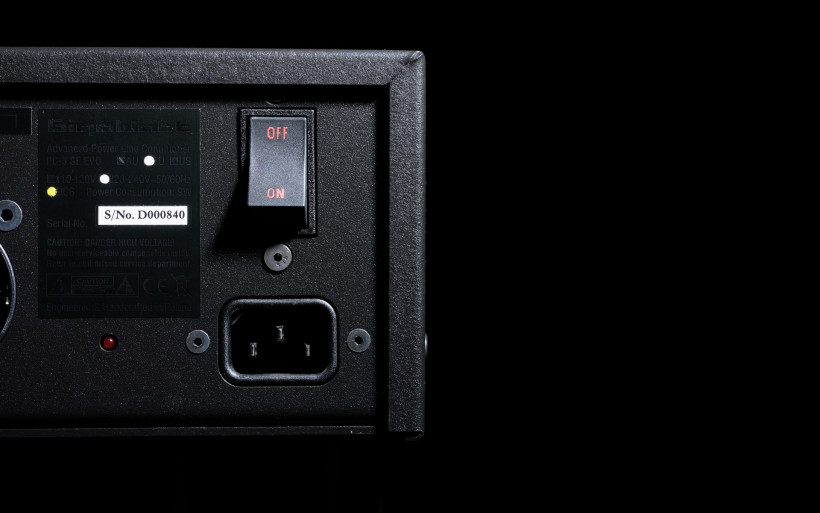 The PC-2 EVO+ proved to be very effective more than a year ago. Not only it very easily bested my PF-2 power strip, but also raised the bar for all upcoming GigaWatt products. The former box introduced mild expectations early on, however this report’s substantially costlier hero had it anything but easy on this count. Shortly past its arrival, the PC-3 SE EVO+ along with associated fancy cable needed to literally turn things upside down to be viewed as a at least remotely sane purchase, or so I thought. However, due to generous hardware on rotation and the reviewing process significantly stretched in time, my opinion about this particular GigaWatt shifted.
The PC-2 EVO+ proved to be very effective more than a year ago. Not only it very easily bested my PF-2 power strip, but also raised the bar for all upcoming GigaWatt products. The former box introduced mild expectations early on, however this report’s substantially costlier hero had it anything but easy on this count. Shortly past its arrival, the PC-3 SE EVO+ along with associated fancy cable needed to literally turn things upside down to be viewed as a at least remotely sane purchase, or so I thought. However, due to generous hardware on rotation and the reviewing process significantly stretched in time, my opinion about this particular GigaWatt shifted.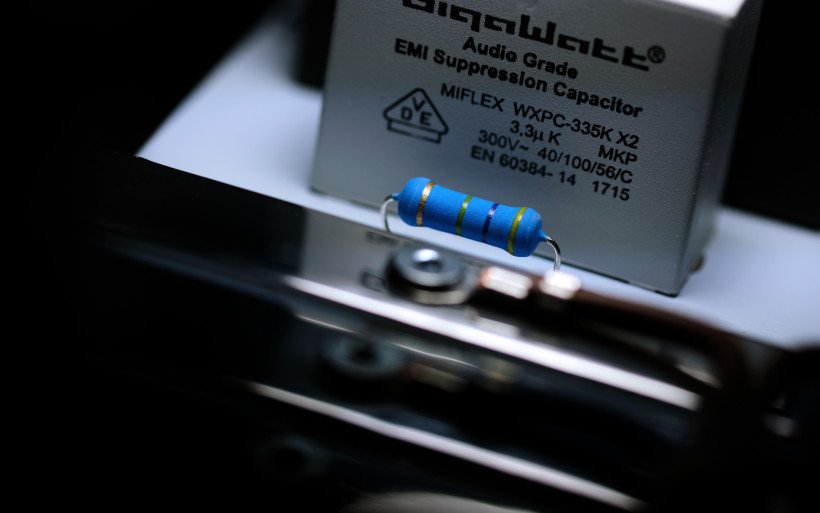 If the PC-2 EVO+ swiftly dethroned my trusty PF-2, then the PC-3 SE EVO+ pretty much slaughtered it and details of how bloody this execution was I’ll politely skip. There’s no point in going this route as the newcomer and my reference box I’ve found comparable to a mild degree at best. It’s fair to say that most power components I’m familiar with tackle the same basic issues, yet the true disparity is in their effectiveness and extra touches they can apply. Figuratively speaking, the PF-2 mops dirty floor once, leaves a stain or two here and there, does nothing else and calls it a day, whereas the PC-3 SE EVO+ not only meticulously cleans the same space, but does it twice and then goes the extra mile via wax apply and then polish to leave place as pristine as it can be. Simply put, as a specialist top class sorter, the former does far more in comparison and unsurprisingly also charges accordingly.
If the PC-2 EVO+ swiftly dethroned my trusty PF-2, then the PC-3 SE EVO+ pretty much slaughtered it and details of how bloody this execution was I’ll politely skip. There’s no point in going this route as the newcomer and my reference box I’ve found comparable to a mild degree at best. It’s fair to say that most power components I’m familiar with tackle the same basic issues, yet the true disparity is in their effectiveness and extra touches they can apply. Figuratively speaking, the PF-2 mops dirty floor once, leaves a stain or two here and there, does nothing else and calls it a day, whereas the PC-3 SE EVO+ not only meticulously cleans the same space, but does it twice and then goes the extra mile via wax apply and then polish to leave place as pristine as it can be. Simply put, as a specialist top class sorter, the former does far more in comparison and unsurprisingly also charges accordingly.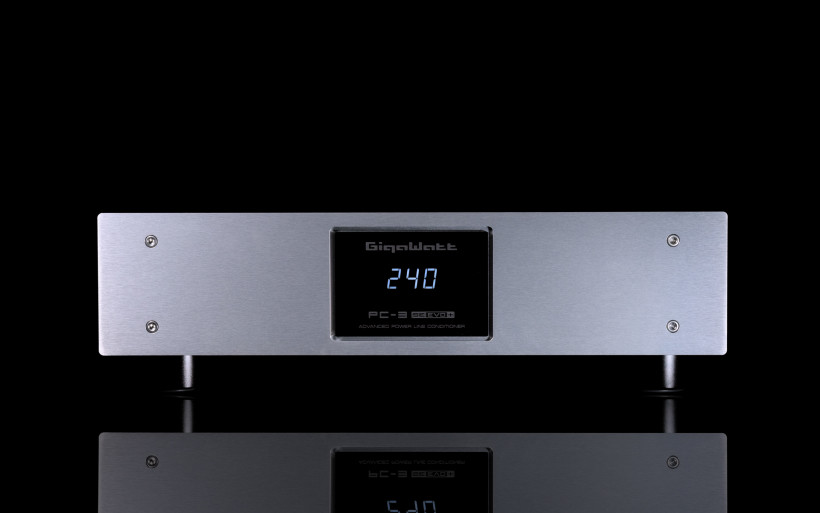 To translate the bit above into proper audio lingo, GigaWatt PC-3 SE EVO+ did everything one might expect from such an item. It rapidly and audibly removed grain from musical canvas to have all instruments and voices more visible and separated better in the process. This action in particular was its core task and several predictable upshots followed. Upstairs harshness, if there was any to begin with, was also smoothened out and less glossy yet not dimmed. At first music seemed slightly darker, however this was something I had to accommodate to. Just as quality USB cables, reclockers and the lot, power components early on might be viewed as tonal balance shifters with their guns aimed at compression and claptrap oftentimes falsely taken as extra informational content. The very first impression is almost always the same once these two culprits are removed; our ears tell us that we hear less, but what happens in reality is the exact opposite.
To translate the bit above into proper audio lingo, GigaWatt PC-3 SE EVO+ did everything one might expect from such an item. It rapidly and audibly removed grain from musical canvas to have all instruments and voices more visible and separated better in the process. This action in particular was its core task and several predictable upshots followed. Upstairs harshness, if there was any to begin with, was also smoothened out and less glossy yet not dimmed. At first music seemed slightly darker, however this was something I had to accommodate to. Just as quality USB cables, reclockers and the lot, power components early on might be viewed as tonal balance shifters with their guns aimed at compression and claptrap oftentimes falsely taken as extra informational content. The very first impression is almost always the same once these two culprits are removed; our ears tell us that we hear less, but what happens in reality is the exact opposite.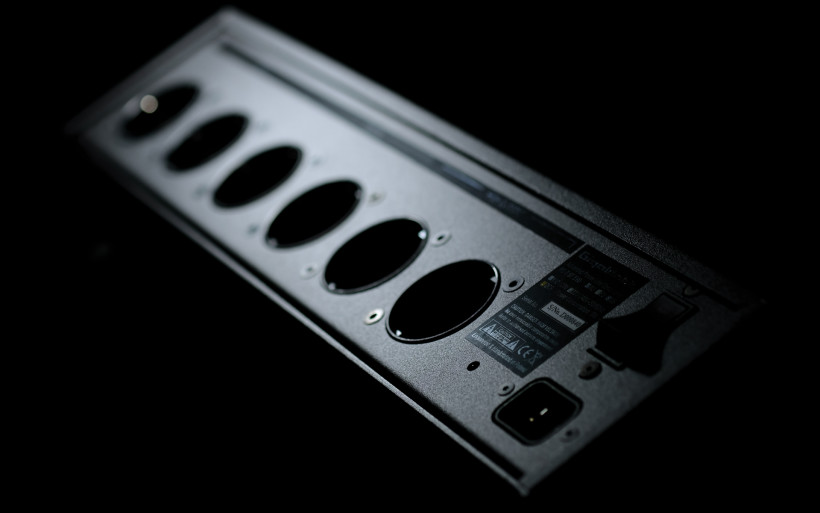 Quality repertoire intake via high caliber hardware doesn’t have to be loud in order to hear everything. On the contrary, low level listening can provide tiniest bits of musical information. Here quality power kicks in, in this context it’s essential and that’s what the PC-3 SE EVO+ brought to the table, it extracted all musical content and showcased it in humane, palpable fashion. It didn’t soften the effect but finely stripped it from contamination and garishness, whereas dimming mentioned above morphed into instrumentally heftier and more organic act, utmost visible during quiet auditions. That’s where the true refinement of this review’s GigaWatt was found. It was pinpoint accurate yet subtle and finely moisturized at the same time; instead of shoving details in my face all at once, every image it painted pleasantly hydrated, articulate, nicely opened up and did all this without a hint of struggle. The PC-3 SE EVO+ simply made the music to flow better and many times did so potently enough to convince me that with certain top shelf companions it was mandatory.
Quality repertoire intake via high caliber hardware doesn’t have to be loud in order to hear everything. On the contrary, low level listening can provide tiniest bits of musical information. Here quality power kicks in, in this context it’s essential and that’s what the PC-3 SE EVO+ brought to the table, it extracted all musical content and showcased it in humane, palpable fashion. It didn’t soften the effect but finely stripped it from contamination and garishness, whereas dimming mentioned above morphed into instrumentally heftier and more organic act, utmost visible during quiet auditions. That’s where the true refinement of this review’s GigaWatt was found. It was pinpoint accurate yet subtle and finely moisturized at the same time; instead of shoving details in my face all at once, every image it painted pleasantly hydrated, articulate, nicely opened up and did all this without a hint of struggle. The PC-3 SE EVO+ simply made the music to flow better and many times did so potently enough to convince me that with certain top shelf companions it was mandatory.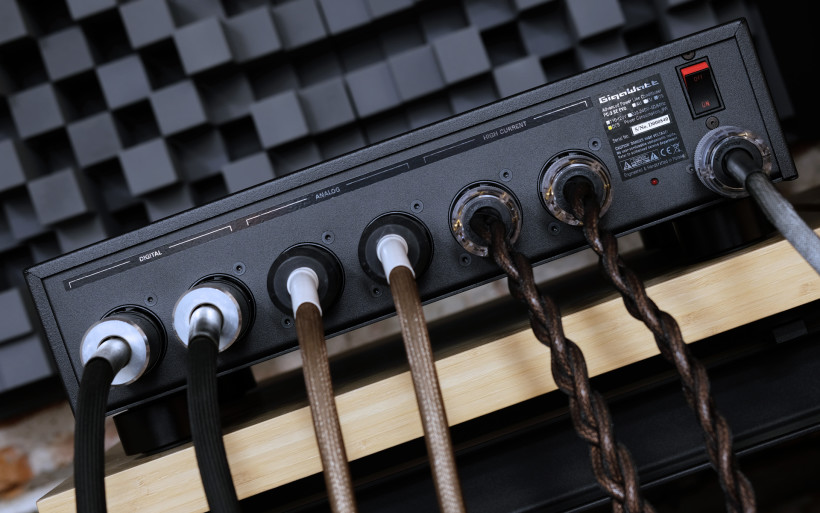 Consistency was one of the strongest cards the GigaWatt PC-3 SE EVO+ held up in its sleeve. My place in recent months was occupied via several exotic, costly and differently voiced specimens, however the Polish box did truly well in each case. Accurate and honest Accuphase P-4500/C-2150, exceptionally open and thunderous Trilogy 995R/915R, rich and impactful Thöress DFP or quick, intense and resolving Bakoon AMP-13R… it didn’t matter. Adam’s machine fed listed products skillfully enough to unlock their potential without any audible price to pay. Power conditioners are said to cripple dynamics in favour of other things they usually do, however I’m happy to report that that’s not the case with this report’s hero. All used power/integrated amps married to either the PC-3 SE EVO+ or in-wall outlet directly, sang similarly vigorously to my ears.
Consistency was one of the strongest cards the GigaWatt PC-3 SE EVO+ held up in its sleeve. My place in recent months was occupied via several exotic, costly and differently voiced specimens, however the Polish box did truly well in each case. Accurate and honest Accuphase P-4500/C-2150, exceptionally open and thunderous Trilogy 995R/915R, rich and impactful Thöress DFP or quick, intense and resolving Bakoon AMP-13R… it didn’t matter. Adam’s machine fed listed products skillfully enough to unlock their potential without any audible price to pay. Power conditioners are said to cripple dynamics in favour of other things they usually do, however I’m happy to report that that’s not the case with this report’s hero. All used power/integrated amps married to either the PC-3 SE EVO+ or in-wall outlet directly, sang similarly vigorously to my ears.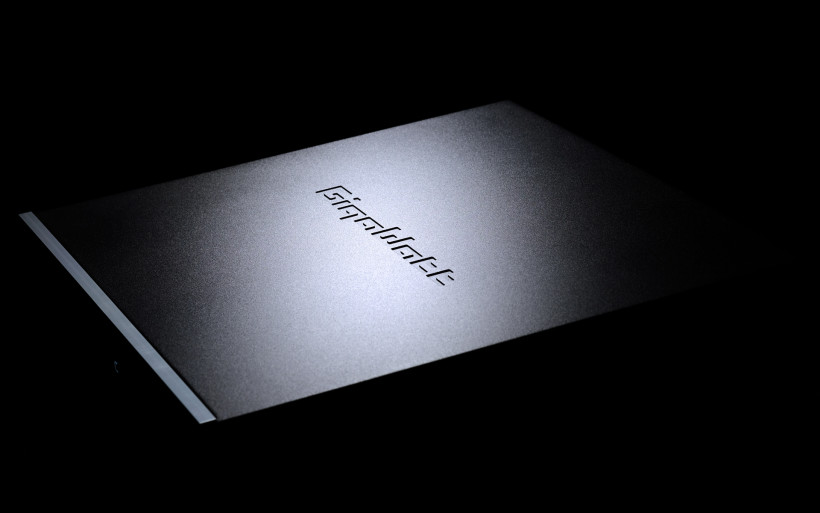 After rather extensive experiments conducted since last November, the insightful, open, effortless and clean GigaWatt also upped the ante on substance, smoothness, texturing richness and joy. Objectively speaking, this action can be labeled as a mild prettifying procedure, a sidestep from the ultimate truth. At this point I can’t say whether musical injection of this particular sort is the PC-3 SE EVO+’s specialty, or perhaps all machines connected to it already sported such goodness in the first place, whereas my old PF-2 truncated it to effectively leave me unaware in the process. This I’ll know once another item similar to this report’s machine arrives, but that’s a story for another time. The takeaway for today is that the latest GigaWatt proved to be universally applicable, effective and not even once was viewed as not suitable for the job. On the contrary, half a year is time long enough to understand this status quo and now be vocal about it.
After rather extensive experiments conducted since last November, the insightful, open, effortless and clean GigaWatt also upped the ante on substance, smoothness, texturing richness and joy. Objectively speaking, this action can be labeled as a mild prettifying procedure, a sidestep from the ultimate truth. At this point I can’t say whether musical injection of this particular sort is the PC-3 SE EVO+’s specialty, or perhaps all machines connected to it already sported such goodness in the first place, whereas my old PF-2 truncated it to effectively leave me unaware in the process. This I’ll know once another item similar to this report’s machine arrives, but that’s a story for another time. The takeaway for today is that the latest GigaWatt proved to be universally applicable, effective and not even once was viewed as not suitable for the job. On the contrary, half a year is time long enough to understand this status quo and now be vocal about it.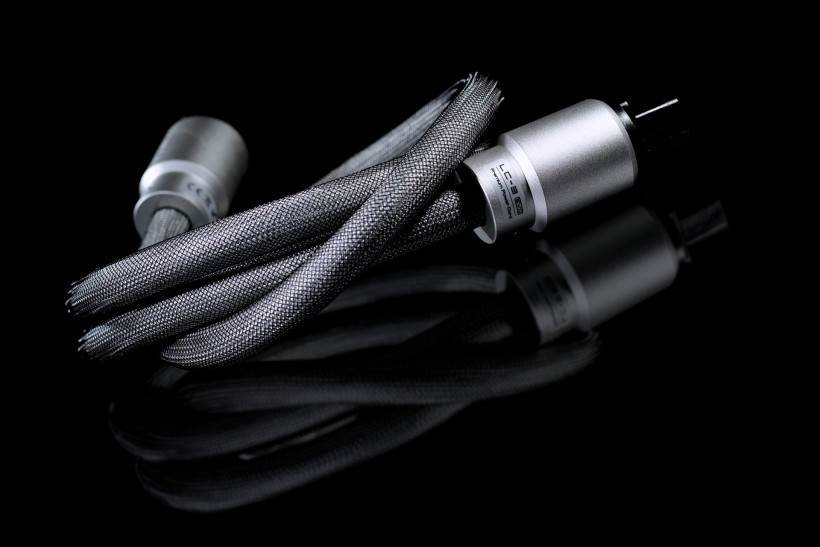 The last thing on the to-do list was to isolate the LC-3 EVO power cord. It’s priced quite similarly to my reference LessLoss C-MARC, hence it made sense to compare the two. Both products made music to flow freely and naturally due to its edges softened up a bit, canvas for instruments darker, virtual sound sources separated better, grain nicely removed and extraction of all nuances easier in the process. The two power cords clearly had several core things in common just as quality power cords should. However, the PC-3 EVO also sounded audibly differently in comparison to my reference leash. The Lithuanian was slimmer and snappier, the GigaWatt sported boosted downstairs and packed more slam. The former displayed all events very clearly and precisely chiseled, the latter made them a bit thicker and rounder. The C-MARC was airier and finer up top, the LC-3 EVO denser and shorter in there. Again my daily driver proved me that that’s the one to go if one’s after the ultimate truth, regardless of how brutal it might be. Simply put, it did more by doing less. Still, with my feisty and informative DAC and the recently arrived Accuphase P-4500 also voiced truthfully and informatively, the GigaWatt sounded truly well. Subjectively speaking, it had my vote with these machines. I also got the impression that this cable efficiently boosted the core flavour of the PC-3 SE EVO+. The C-MARC with this power conditioner netted slimmer and less blossomed result. It was perfectly fine and very articulate as per usual, though the Polish leash went the extra mile on moisture count.
The last thing on the to-do list was to isolate the LC-3 EVO power cord. It’s priced quite similarly to my reference LessLoss C-MARC, hence it made sense to compare the two. Both products made music to flow freely and naturally due to its edges softened up a bit, canvas for instruments darker, virtual sound sources separated better, grain nicely removed and extraction of all nuances easier in the process. The two power cords clearly had several core things in common just as quality power cords should. However, the PC-3 EVO also sounded audibly differently in comparison to my reference leash. The Lithuanian was slimmer and snappier, the GigaWatt sported boosted downstairs and packed more slam. The former displayed all events very clearly and precisely chiseled, the latter made them a bit thicker and rounder. The C-MARC was airier and finer up top, the LC-3 EVO denser and shorter in there. Again my daily driver proved me that that’s the one to go if one’s after the ultimate truth, regardless of how brutal it might be. Simply put, it did more by doing less. Still, with my feisty and informative DAC and the recently arrived Accuphase P-4500 also voiced truthfully and informatively, the GigaWatt sounded truly well. Subjectively speaking, it had my vote with these machines. I also got the impression that this cable efficiently boosted the core flavour of the PC-3 SE EVO+. The C-MARC with this power conditioner netted slimmer and less blossomed result. It was perfectly fine and very articulate as per usual, though the Polish leash went the extra mile on moisture count.
Summary
GigaWatt PC-2 EVO+ reviewed in late April 2018 not only introduced itself as a specimen way beyond reach of my trusty power strip, but it did so explicitly enough for me to understand that this oldtimer had to go. Back then I was hesitant with my decision to ditch the PF-2 most likely driven by sentiment, however now I’m not. Today’s the day.
GigaWatt PC-3 SE EVO+ and its more affordable PC-2 EVO+ sibling score equal notes on assembly quality, looks and usefulness. Both items dressed in the very same vanilla clothes are utilitarian utmost practical tools made to do a very specific job above all else, period. GigaWatt’s not into high bling factor, never was and most likely never will be. Adam and his crew have been putting function on the pedestal for years and not form. Subjectively speaking, I couldn’t care less about visuals of an item such as a power line conditioner, as long as it doesn’t poke my eyes with excessive flaunt we’re dandy. However, in 100% in-house made hardware built to last, reliably guard oftentimes very expensive companions and significantly improve upon their sonics is what floats my journo boat. That’s today’s game exactly, that’s what one pays for.
Upper four figures on GigaWatt PC-3 SE EVO+’s ask easily turn it into a costly luxurious item and quite possibly also an overkill in most cases. My sincere common sense advice is to start from lower tiered more affordable products, see what happens and move from there if financials allow it and desire to push further is still on. However, heavyweight enthusiasts far beyond entry level goods and with key components already well sorted have different needs. Many simply want to squeeze every bit of performance out of setups they already have, which leaves them with various tweaks such as today’s exceptionally potent one. If you’re after top tier hardware of the sort, please know that GigaWatt PC-3 SE EVO+ is now filed in my privy book as the best I’ve heard to date and the one to beat, simply put victorious. ‘Till next time!
Associated equipment:
- Amplifiers: FirstWatt F7, Kinki Studio EX-B7, Trilogy 995R, Accuphase P-4500, EggShell TanQ, Ayon Scorpio, Bakoon AMP-13R
- Sources: LampizatOr Pacific (KR Audio T-100 + KR Audio 5U4G Ltd. Ed.)
- Speakers: Boenicke Audio W8, sound|kaos Libération
- Preamplifiers: Kinki Studio EX-P7, Trilogy 915R, Accuphase C-2150, Pass Labs XP-12, Thöress Dual Function Preamplifier
- Transports: fidata HFAS-S10U
- Speaker cables: Audiomica Laboratory Celes Excellence, LessLoss C-MARC
- Interconnects: Audiomica Laboratory Erys Excellence
- Power components: Gigawatt PC-3 SE EVO+, Gigawatt PF-2 + Gigawatt LC-2 MK2 + Forza AudioWorks Noir Concept/Audiomica Laboratory Ness Excellence/LessLoss C-MARC
- Rack: Franc Audio Accesories Wood Block Rack
- Music: NativeDSD
Retail prices of reviewed components in EU (excl. VAT):
- GigaWatt PC-3 SE EVO+ with LS-2 EVO cable: €8’310
- GigaWatt PC-3 SE EVO+ with LS-1 EVO cable: €7’050
- GigaWatt PC-3 SE EVO+ with LC-3 EVO cable: €6’195
- GigaWatt PC-3 SE EVO+ with LC-2 EVO cable: €5’700
- Rolling-Ball Isolation System Anti-Vibration Feet (set of four): €660
Manufacturer: GigaWatt




